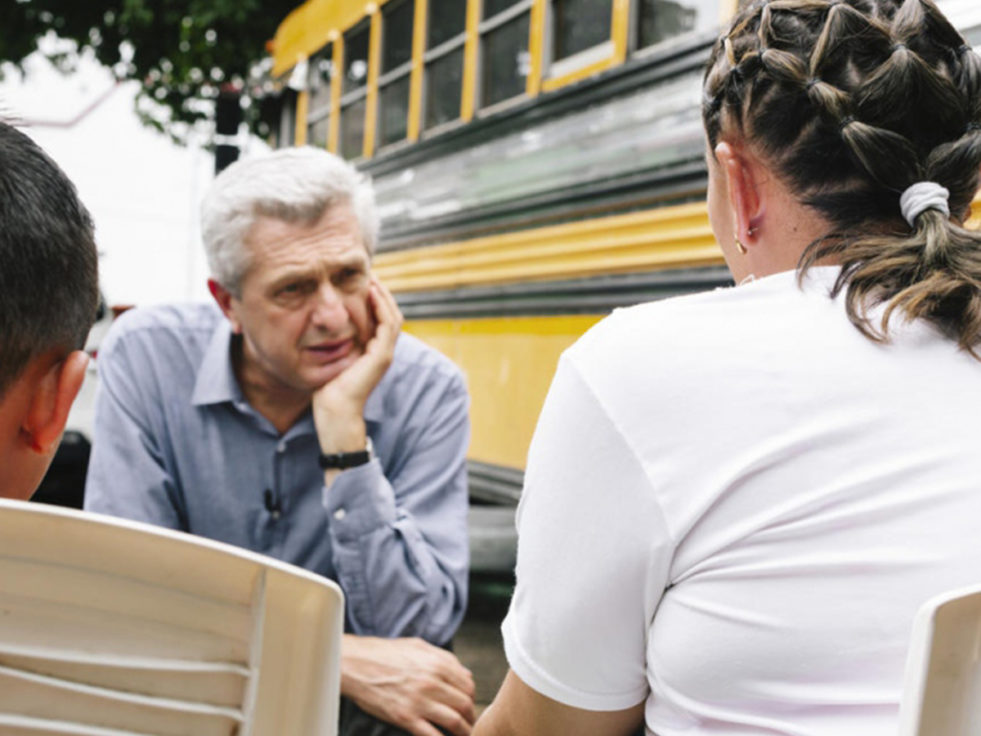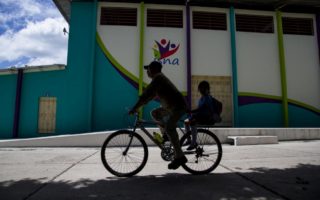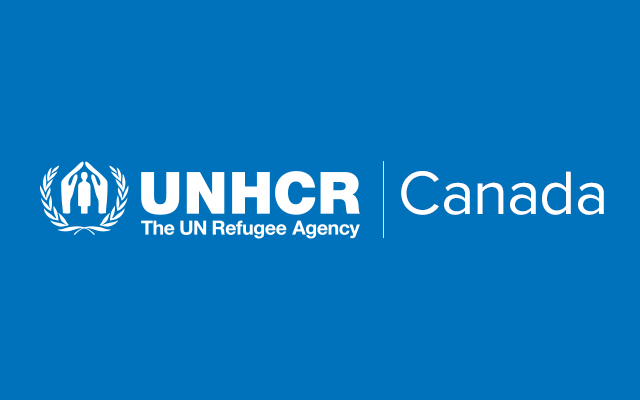
UN High Commissioner for Refugees Filippo Grandi talks with refugees from Honduras at a shelter in Tapachula, Mexico. © UNHCR/Gabo Morales
As Central Americans’ asylum claims soar 231 per cent in less than one year, Filippo Grandi calls for further resources to better cope with the flow.
By Jenny Barchfield in Tapachula, Mexico
Just hours after Edgar received a menacing call from a street gang that had hounded and extorted him years earlier for being gay, he threw some clothes into a backpack and struck out from El Salvador.
When members of the Martinez family were attacked by security forces in Nicaragua in retribution for having taken part in mass anti-government protests in 2018, they abandoned their small business, their home and other property and ran.
Josué, Edgar and the Martinezes are among the soaring number of people seeking asylum in Mexico. Their experiences—of targeted threats, extortion, and political persecution—are typical of the forces that are fueling Mexico’s consolidation as an asylum destination, the United Nations High Commissioner for Refugees, Filippo Grandi, underscored during a four-day-long visit to the country that concluded on Monday.
“I thank Mexico for providing the urgent protection that these people need.”
“The stories are terrible—of violence, extortion, gender-based violence, and violence against the LGBTI community,” Grandi said during a press conference in Tapachula, a city in the southernmost state of Chiapas, on the border with Guatemala. Chiapas, the poorest state in the country, is the point of entry for most asylum-seekers arriving in Mexico.
“I thank Mexico for providing the urgent protection that these people need,” Grandi said.
Mexico has a long tradition as a destination for asylum seekers, having received Spaniards fleeing their country’s 1936-1939 civil war; those on the run in the 1960s and ‘70s from dictatorships in South American nations including Chile, Argentina, and Brazil; and, in the ‘80s and ‘90s, people fleeing conflicts in Central America.
As the United States enacts more restrictive policies on asylum, a recent spike in the number of applications has renewed Mexico’s status as a destination for those fleeing conflict and persecution—particularly people from El Salvador and Honduras, which are among the world’s most violent nations.
With more than 48,000 asylum applications filed up to the end of August, Mexico has seen a 231 per cent increase in the number of asylum applications, compared with all of last year. As recently as 2014, the country received just 2,137 applicants, and the number of claims has consistently increased year by year.
Grandi underlined the important role of COMAR, Mexico’s Refugee Agency, but stressed that its budget needed to grow in lockstep with the rise in asylum applications.
“If COMAR had more resources, it could do its job more efficiently and cut the time that asylum-seekers have to wait for decisions about their status,” he said at Saturday’s press conference.
Grandi was on hand on Saturday for the inauguration of COMAR’s new registration facility in Tapachula, which is seen as key to helping cut wait times and thus giving those granted asylum a head start on rebuilding their lives.
During his daylong visit to Tapachula, Grandi met with Josué, 31, the Honduran fleeing targeted threats resulting from his political activism, and with Édgar, 44, the gay man from El Salvador who was shaken down by one of the deadly street gangs that control large swaths of territory throughout the country. Both are awaiting decisions on their asylum applications in Tapachula.
“When I arrived here, I felt safe for the first time in a long time,” said Josué.
During Grandi’s September 27-30 visit to Mexico, his second to the country as High Commissioner for Refugees, he also traveled to the industrial city of Saltillo, a few hour’s drive south of the border with Texas. There, he toured the facilities of appliance manufacturer Mabe, which was founded by in 1946 by Spanish migrants and currently employs dozens of refugees.
“We don’t want to be a burden. We want to contribute to Mexico.”
Grandi also visited with families who have taken part in a UNHCR integration program that sees refugees relocated from southern Mexican states like Chiapas, with slim job prospects, to the prosperous industrial north of the country.
Grandi called the initiative “phenomenal,” adding he “hadn’t seen projects like these in many other countries.”
Édgar, Josué and the Martínez family all expressed interest in taking part in such a program, saying they believed it would allow them to restart their lives, in safety, in cities where they would be able to find work to support themselves and their families.
“We dream of having our asylum application approved and getting jobs so we can save money to start our own business again,” said Carla Martínez, 28, the Nicaraguan woman who was forced to abandon a successful business she ran with her husband after the pair took part in the mass protests that rocked the country in 2018. “We don’t want to be a burden. We want to contribute to Mexico.”
*Names have been changed for protection reasons
Originally published on UNHCR on 1 October 2019





